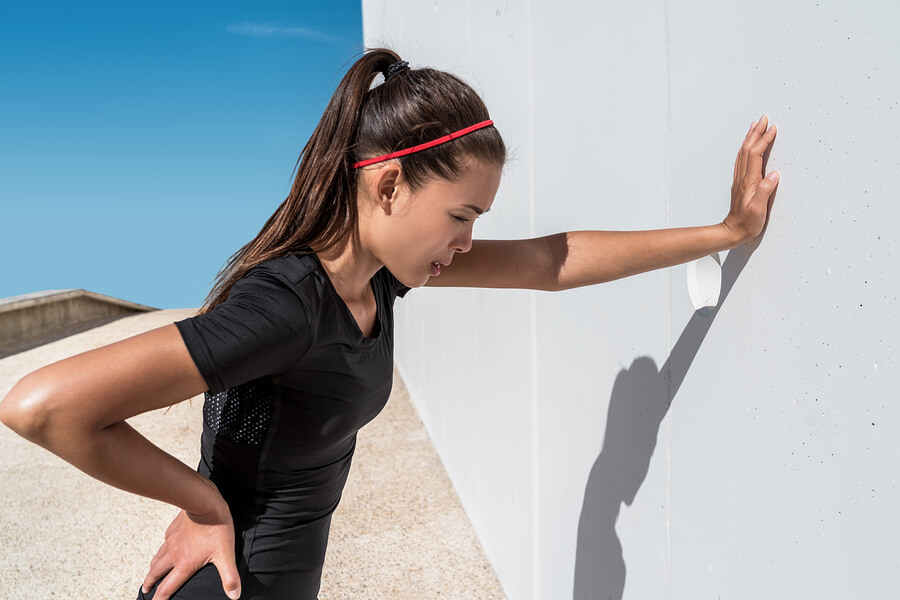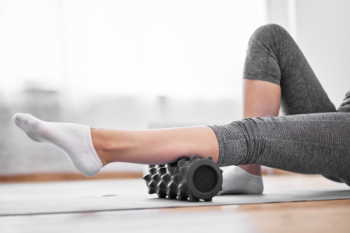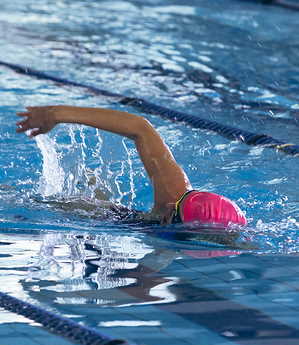A Guide to Active Recovery
How icing, foam rolling and moderate exercise can help your body repair
What Is Active Recovery?
 At its simplest, active recovery is a period of low intensity movement following a higher intensity workout or athletic event. While passive recovery involves taking a break from exercise – active is the operative word here.
At its simplest, active recovery is a period of low intensity movement following a higher intensity workout or athletic event. While passive recovery involves taking a break from exercise – active is the operative word here.
A University of Glasgow study found that when compared to passive recovery, active recovery initiated a faster clearance of accumulated blood lactate. Similarly, Finnish researchers have found that active recovery triggers favorable responses of blood proteins (IGF-I and IGF) following heavy resistance loading sessions such as weightlifting. High intensity interval training (HIIT) and Crossfit enthusiasts are jumping on the active recovery bandwagon, making time for their muscles to rebound.
In a side by side comparison of football players and canoeists, scientists in Poland concluded that the specific activity was not really a factor in the effectiveness of active recovery. Instead, they suggest that targeting the correct muscle groups is imperative regardless of the original activity. Their research revealed that 20 minutes of light activity could help alleviate post workout muscle fatigue when the same muscles used in the original exercise were effectively targeted.
“Active legs recovery in both groups was effective in reducing fatigue from evaluated muscles, where a significant decrease in fatigue index was observed,” the report reads. Following an active recovery session, study participants found that peak torque, work, and power parameters remained steady. Using the same measurements, the athletes experienced a significant decrease after periods of passive recovery.
Besides moderate exercise, Icing, foam rolling, and sports massages are all active recovery modalities, and each one aids in repairing tissue and easing post workout pain a little differently. Using one or a combination of active recovery techniques, athletes can reduce muscle fatigue, inflammation, and soreness while maintaining range of motion.
Types of Active Recovery
While active recovery is a relatively new term, many athletes have been doing it all along under a different name. It turns out, what your high school gym teacher called “cool downs” may have been helping more than you knew. In addition to reduced intensity variations of the original exercise, stretching, icing, and myofascial release are also powerful active recovery techniques.
Whatever you call it, we like to break active recovery down into two categories: actions that reduce damage, and those that improve healing.
Icing & Cryotherapy
Icing, also known as cryotherapy, is a tried and true method of curbing inflammation and muscle soreness. Ongoing research continues to refine the how, the why, and the how long, but there’s a reason icing is a go-to for sports medicine practitioners across the board. It’s been the primary treatment for acute injuries and muscle soreness for years, mostly because it works. Andrews University physical therapists recommend icing in 20 minute intervals at least 3 times a day following an intense workout. When administered for the first 48 hours after exercising, icing as an active recovery method can help with delayed onset muscle soreness (DOMS).
Massage & Foam Rolling

Myofascial release techniques like massage, stretching, and foam rolling are an important component of an active recovery regimen. Bodywork and specialized massage disciplines are great for addressing injuries, tightness, and compensation related asymmetry. For general maintenance between visits, or those looking for an affordable at home alternative, try a self guided foam rolling and stretching regimen. Kinesiologists at California State San Marcos posit that foam rolling can preserve muscle strength the day after strenuous exercise, and is more effective than stretching alone. Like icing, many use foam rolling to reduce delayed onset muscle soreness. If you don’t have a foam roller handy, grab a tennis ball and use it against the floor or a wall.

An easy way to ensure your active recovery technique uses the same muscles as the original activity is to do a similar movement at a lower intensity. Runners, for example, can dial down the speed and incline on the treadmill or walk a couple of cool-down laps after long run. If you’d like to mix up your movements or cool down with a different sport, feel free. Just keep in mind that the muscles you engaged in the original exercise are going to need the most attention.
Indoor Rowing & Cycling
Ending your workout on the cardio side of the gym doesn’t have be a total sweat fest. Remember, active recovery can be a cool down, so don’t worry about reaching high speeds or intensity. Try a stationary bike or row machine after HIIT or weightlifting. Hit the ergometer (arm bike) or row machine if you focused on arms that day. Or, end your workout with a moderate cycling session on leg day. Your active recovery session doesn’t have to be complicated, it just needs to match the muscles used earlier in the workout.
Swimming & Water Aerobics
Used by physical therapists (and race horse trainers), swimming and water exercises are low impact ways to keep your body moving. If traditional active recovery techniques like walking and cycling cause pain due to joint injuries and repetitive strain issues, a little buoyancy might be just what you need. Swimming laps offers a full body workout and some extra credit cardio, while controlled water exercises can isolate individual muscle groups and enable you to target the areas you used during the initial, full intensity workout.
Whatever activity you engage in, you can enjoy it more intensely by implementing active recovery into your routine.
